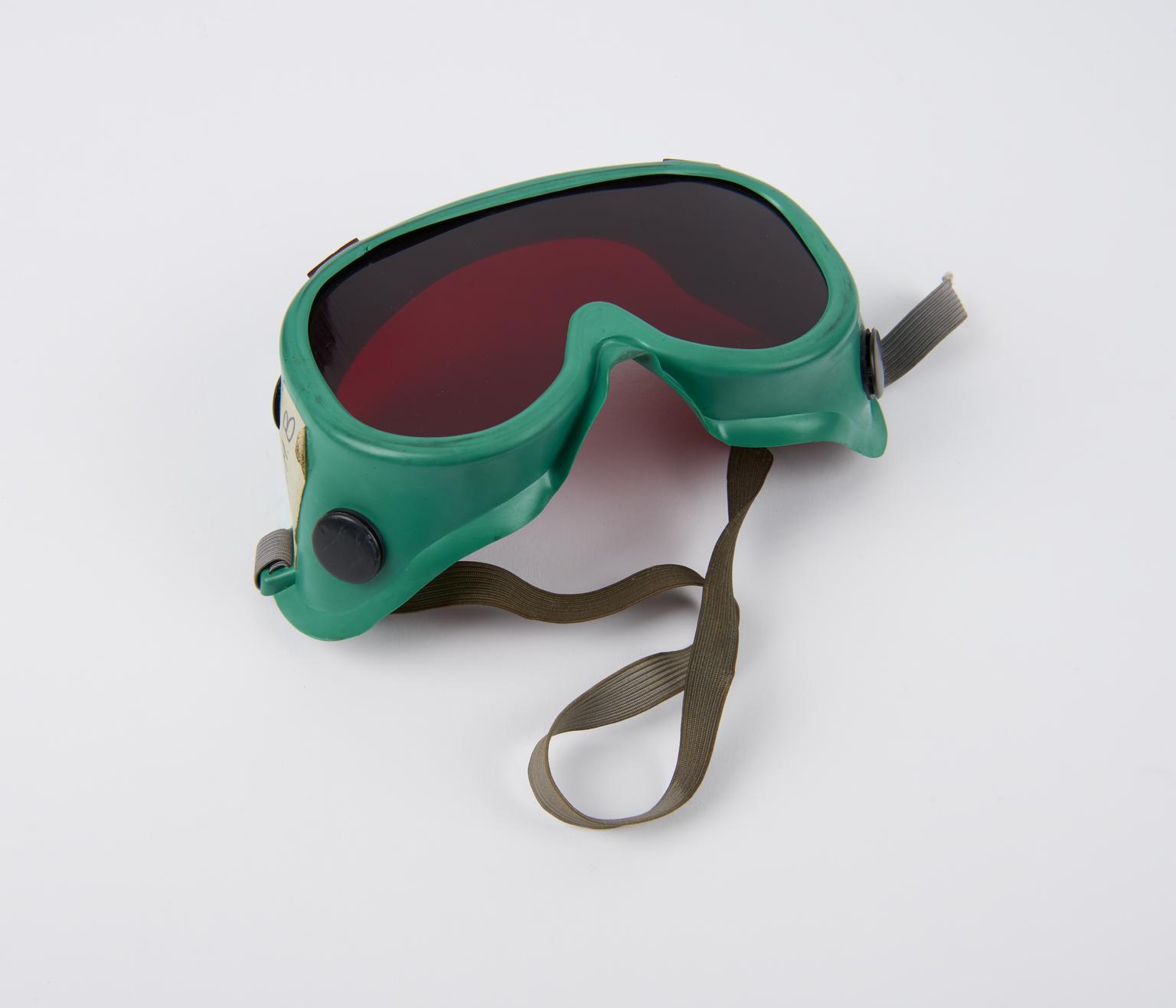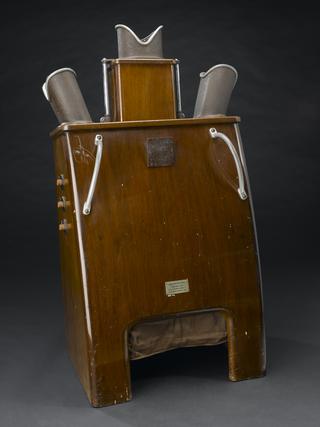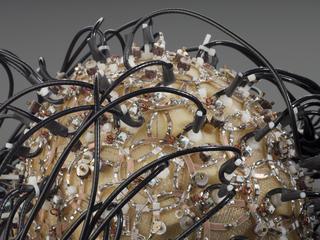Fluoroscopic screening unit by Exal, England, 1950-1960 with three items of radiological protection gear: lead lined apron, gloves and goggles
A fluoroscope is a form of X-ray apparatus. It created images of the inside of the body that were viewed in real time and without taking and developing X-ray photographs. Chest-screening frames like this one diagnosed diseases such as pulmonary tuberculosis. Doctors using radiography and X-rays found some ‘healthy’ patients still showed signs of the disease, such as lesions in the lungs. An X-ray machine like this was the only way to view inside the body without surgery. This machine belonged to a doctor in Harley Street, London, who donated it to the Science Museum's collections on his retirement in 1984.










